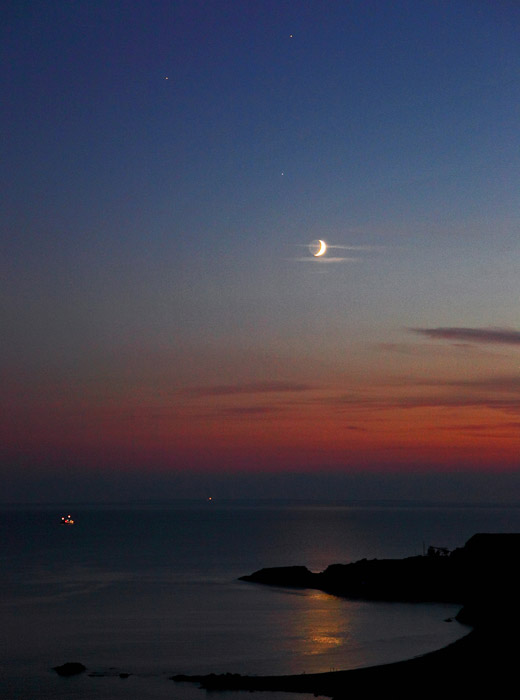Difference between revisions of "August 23, 2012"
| Line 12: | Line 12: | ||
August 21, 2012. Canon Eos 5D MarkII; Exp: 1/4 sec; F/4; ISO: 2000<br /> | August 21, 2012. Canon Eos 5D MarkII; Exp: 1/4 sec; F/4; ISO: 2000<br /> | ||
<br /> | <br /> | ||
| + | <p><b>Yesterday's LPOD:</b> [[August 22, 2012|Tasmanian Moon]] </p> | ||
| + | <p><b>Tomorrow's LPOD:</b> [[August 24, 2012|Lava Ocean And Crater Interactions]] </p> | ||
<hr /> | <hr /> | ||
| − | |||
| − | |||
| − | |||
| − | |||
| − | |||
| − | |||
| − | |||
| − | |||
| − | |||
| − | |||
| − | |||
| − | |||
Revision as of 12:22, 7 February 2015
Homeward Beams

image by Stefano De Rosa
In 1878 Charles Darwin's son proposed that the Moon came from the Earth, and in fact the Pacific Ocean was proposed by some as the hole left behind. I think we can now say that place of origin is wrong. Stefano's image shows that it is likely that the Moon came from the island of Elba off the east coast of Italy. As this image shows the Moon is exactly the same size as a semicircular notch cutting one of the arms of the Bay of Punta Calamita. In fact, the calamity of the loss of the Moon did not leave a big void, but just a little knick. The Moon remembers its homeland, sending down a beam of moonlight that passes right through the notch.
Chuck Wood
Technical Details
August 21, 2012. Canon Eos 5D MarkII; Exp: 1/4 sec; F/4; ISO: 2000
Yesterday's LPOD: Tasmanian Moon
Tomorrow's LPOD: Lava Ocean And Crater Interactions



